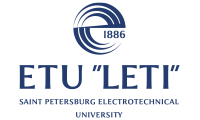Wireless technology largely owes its existence to Saint Petersburg Electrotechnical University "LETI" and particularly Professor Alexander Popov, the inventor of radio communications. Since its foundation 135 years ago, ETU "LETI" has made considerable advancements in such fields as radio engineering, antenna technology, as well as electronic components for solid-state and vacuum electronics, as acknowledged by the global scientific community. Currently, the university has also competences in such fields as RF, microwave and terahertz engineering.
In February 2020, to strengthen the leading position in the field of wireless information and communication systems, the Advanced Wireless Technologies R&D division was identified as one of the university priorities. It aims to generate knowledge, develop and commercialize innovative products on its basis, as well as to produce graduates for the digital industry through problem-solving and project activity.
"In the digital age, all data transmission technology is assumed to be just a service by an average user. Everybody uses smartphones and gadgets without even noticing that the data has to be generated, processed, encoded and transmitted. The frontier of modern science is the technology to transmit big amounts of data at a large distance with great speed. The Advanced Wireless Technologies R&D division allows to approach this topical issue in various ways." – as explained by Oleg Markelov, PhD in Engineering, Director of the Advanced Wireless Technologies R&D division, Vice-Dean for Research at the Faculty of Radio Engineering
In this R&D area, ETU "LETI" researchers partner with their Finnish, German, Dutch, South Korean and Japanese colleagues to deal with signal generating and processing, electromagnetic compatibility and safe use, secure data transmission, as well as wireless systems and device energy efficiency.
The applications of research findings include communication systems, IoT and sensor networks. The area is also closely connected with other R&D projects at the university. For example, remote health monitoring systems require the sensors attached to the human body to connect with a remote healthcare facility server, thus forming a data exchange network.
Another pool of projects is new-generation networks – 5G NR. The technology provides for extremely fast data rates, which is relevant for VR and AR helmets and medical applications. The technology is also relevant, for instance, in pilot training simulators. In August 2019, Viktor Sheludko, Rector of the university, signed a Cooperation Memorandum to establish a 5G and Advanced 2030 Network Consortium. In the consortium, ETU "LETI" researchers work to achieve ultra-low latency signal transmitting and develop joint education programs to produce telecommunication majors well in advance.
Currently, the ETU "LETI" Research Institute of Forecasting and Monitoring of Emergency Situations Prognoz (Research Institute Prognoz) is developing a passive radar monitoring system using satellite illumination signals. The technology would help prevent crime using drones and protect critical and potentially dangerous objects from terror attacks and artificial hazards.
"Traditionally, the field of air space monitoring has been dominated by active radars that locate airborne objects at medium and high altitudes. However, it is not always reasonable to apply them for identifying light aircrafts and drones near the Earth's surface. It is very costly and can disrupt vital electronic support and communication systems. It can also violate ecology and safety standards." – as explained by Evgeniy Vorobiev, a researcher at Research Institute Prognoz.
Unsanctioned access of potentially dangerous stealthy targets to objects not covered by terrestrial communication systems will be prevented by space transmitters – GPS and GLONASS systems that can reach almost everywhere.
One more promising project developed at ETU "LETI" is a hyperspectral camera that detects, classifies, and tracks both natural and artificial objects found in space. It also analyses their trajectories and determines the degree of hazard that they represent. The system that ensures spacecraft and astronaut safety was entrusted to PhD and senior master's students from the ETU "LETI" Department of Television and Video Engineering.
"When trying to detect artificial and natural objects, the main problems are their low brightness, high speed (up to several km/s) and the fact that their optical signal is so similar to one of the stars. This is the most apparent when the angular size of a photosensor pixel is larger than the object angular size, which is typical for remote stars or small-size space debris," Pavel Baranov, Deputy Head for Research at the Television and Video Engineering Department.
The device developed by ETU "LETI" researchers is installed on spacecrafts for uninterrupted video monitoring, with a relatively lower speed of objects compared to ground-based monitoring. Objects in space will be classified based on their spectral characteristics. According to the latest experiments that assessed the reflection coefficients of various coatings, all materials are very different from each other. Moreover, there is a big difference between spectral reflections of coatings and spectra of various star types. Modern electronic components allow a hyperspectral camera both to possess high technical capabilities and to be small.
The multi- and hyperspectral system design technology developed at ETU "LETI" is also applied for developing medical diagnostic systems, as well as remote sensing systems.





